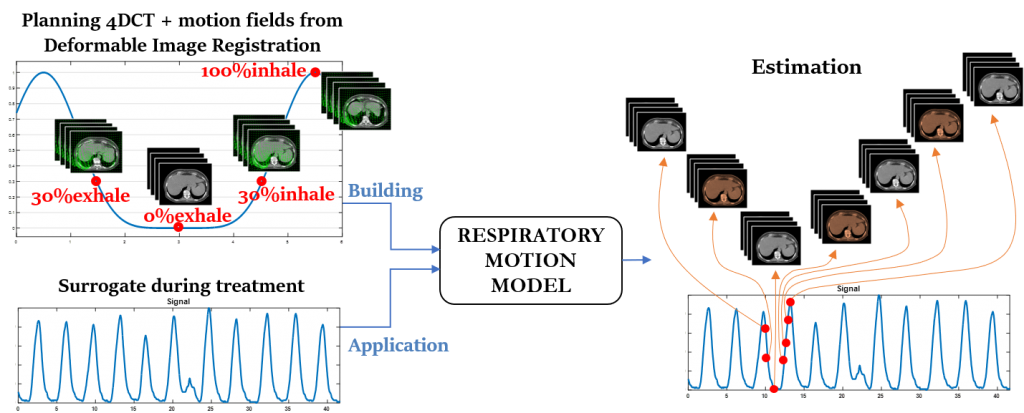4D imaging and motion modelling
- Use of respiratory-correlated 4D imaging (3D + time) for organ motion quantification during treatment planning, such as 4D Computed Tomography (4DCT) and 4D Magnetic Resonance Imaging (4D MRI)
- Implementation of methods for artifacts reduction in 4D imaging, based on external/internal, single/multiple points respiratory signals
- Implementation of motion modelling techniques to estimate geometric and dosimetric changes in presence of respiratory motion. These consist in advanced local and global motion models for tumor tracking and treatment verification and adapation.
- Exploitation of non-rigid image registration algorithm for motion quantification, with a specific focus on validation strategies
Research projects on this topic are currently ongoing in collaboration with the National Centre of Oncological Hadrontherapy (CNAO, Pavia, Italy) for an optimal treatment of moving organs. Additionally, projects on this topic are also pursued within the RAPTOR project (H2020-MSCA-ITN).


MRI-guidance
- Optimization of respiratory-correlated 4D MRI and time-resolved 2D cine-MRI images for organ motion management
- Implementation of strategies for tumor tracking in MRI-linac systems based on landmarks and non-rigid registration, along with development of motion models and methods for 3D anatomo-pathological estimation.
- Generation of virtual 4DCT based on radiation-free 4DMRI data for treatment adaptation in photon and particle therapy
Research collaborations on MRI guidance are ongoing with the University of Sydney (Sydney, Australia) and the Ludwig Maximilian University (LMU, Munich, Germany) where MRI-linac systems are available, and with the National Centre of Oncological Hadrontherapy (CNAO, Pavia, Italy) for particle treatment optimization. Projects on this topic are also pursued within the RAPTOR project (H2020-MSCA-ITN).
![]()

